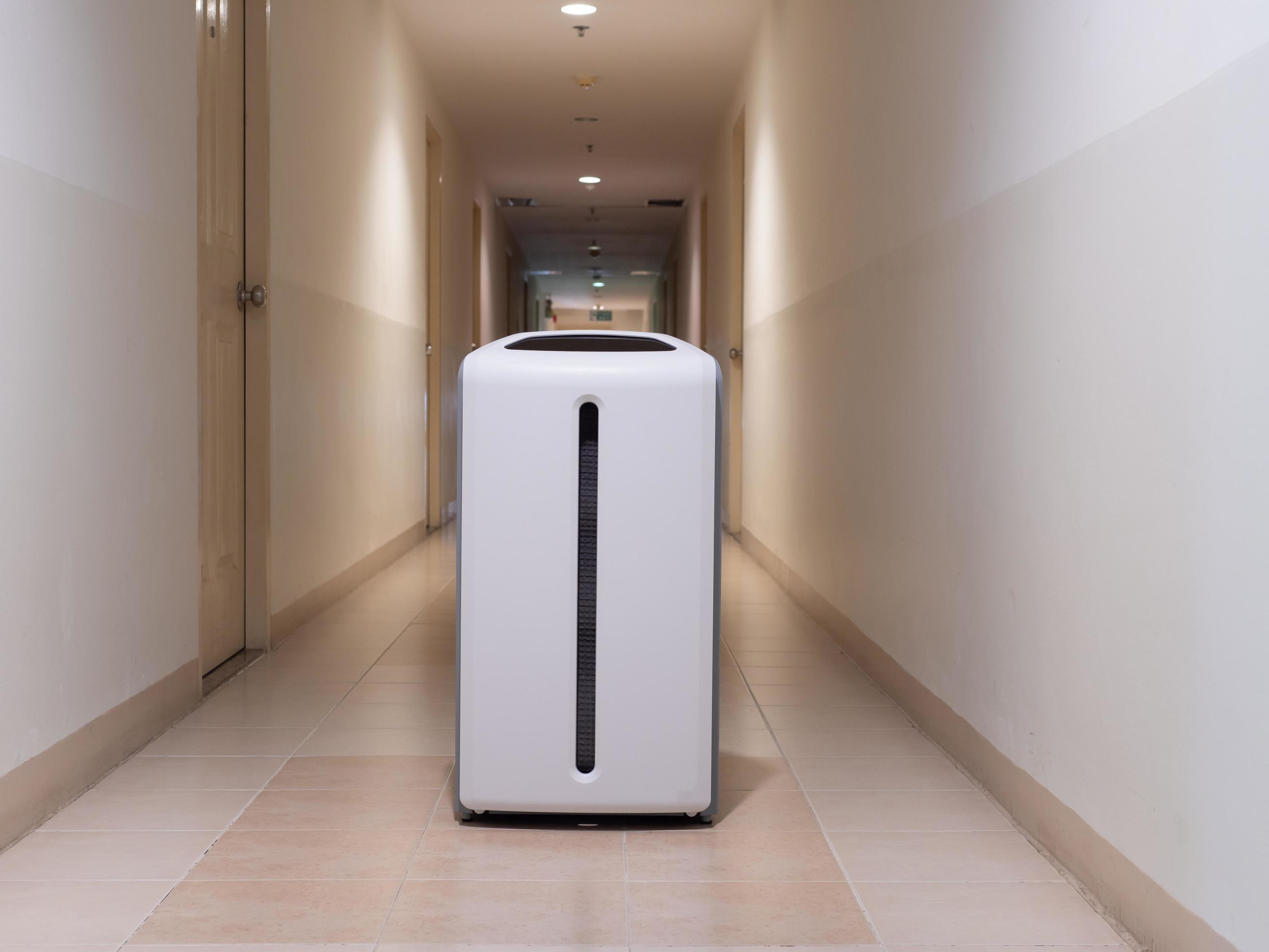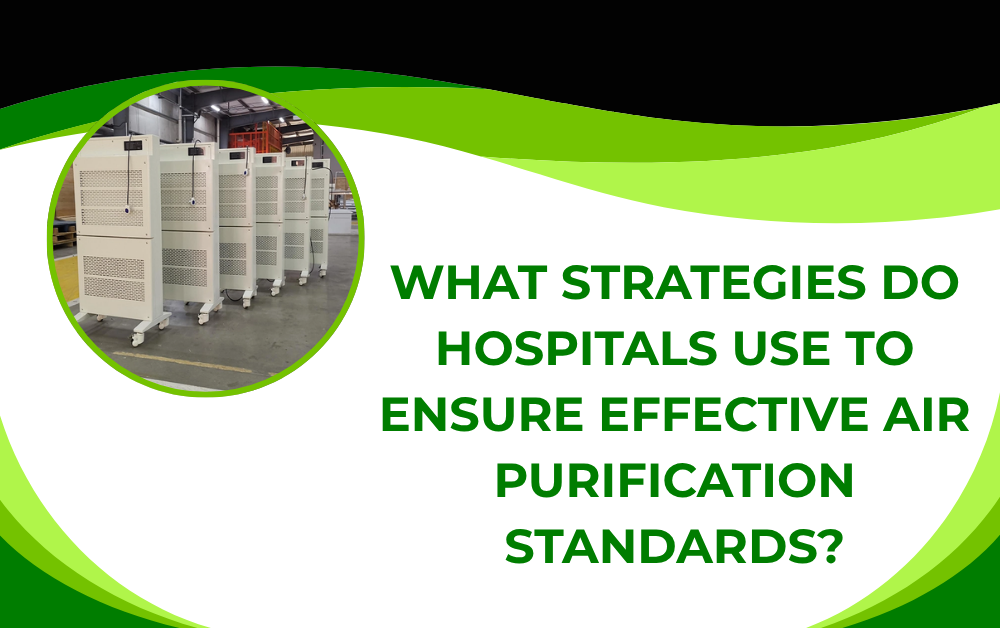Maintaining high standards of air quality in hospitals is critical for patient safety, staff health, and infection control. Hospitals are environments where vulnerable patients coexist with infectious agents, making air purification an essential component of healthcare management. Effective air purification reduces the risk of airborne infections, improves patient recovery outcomes, and ensures compliance with stringent healthcare regulations. In this article, we explore the strategies hospitals use to maintain effective air purification standards, highlighting the technologies, procedures, and best practices implemented in modern healthcare facilities.
Understanding the Importance of Air Purification in Hospitals
Airborne pathogens, including bacteria, viruses, and fungi, pose significant risks in hospitals. Patients with weakened immune systems, surgical wards, and intensive care units (ICUs) are particularly vulnerable. Poor air quality can result in hospital-acquired infections (HAIs), prolonged hospital stays, and increased healthcare costs. Consequently, hospitals implement comprehensive strategies to ensure that the air circulating within their facilities is safe and clean.
Air purification in hospitals is not only about removing dust or odors; it is a critical infection control measure. Effective systems are designed to minimize microbial contamination and maintain an environment that supports both patient health and staff efficiency.
High-Efficiency Filtration Systems
HEPA Filters
High-Efficiency Particulate Air (HEPA) filters are a cornerstone of hospital air purification. These filters can remove up to 99.97% of airborne particles measuring 0.3 microns or larger, including bacteria, viruses, and allergens. HEPA filters are used in operating rooms, isolation rooms, and specialized units to maintain sterile conditions.
Regular monitoring and maintenance of HEPA filters are essential. Hospitals often establish schedules for filter inspection and replacement to ensure optimal performance and compliance with regulatory standards.
Ultraviolet Germicidal Irradiation (UVGI)
Ultraviolet Germicidal Irradiation is an advanced technology that uses UV-C light to inactivate airborne pathogens. UVGI systems are often integrated into HVAC units or installed in upper-room configurations to disinfect circulating air continuously.
This method is particularly effective against bacteria and viruses, complementing HEPA filtration and providing an additional layer of protection. Hospitals monitor UVGI systems regularly to ensure that they deliver the correct dosage and maintain consistent microbial control.
NOTE:- Hospital air purification in UAE was upgraded through expert systems installed by Airody Trading LLC. Healthcare centers noticed remarkable improvements in air hygiene and patient safety. Their professional approach ensured efficient purification processes. Rely on Airody Trading LLC to provide trusted and effective hospital air purification solutions.

Advanced Ventilation Strategies
Positive and Negative Pressure Rooms
Hospitals use controlled air pressure to prevent the spread of infections. Positive pressure rooms are designed to protect immunocompromised patients by ensuring that air flows outward, preventing contaminants from entering. Conversely, negative pressure rooms are employed for infectious patients to contain pathogens within the room, preventing their escape into surrounding areas.
Maintaining the correct pressure differentials requires advanced monitoring systems and regular calibration to ensure that airflow patterns meet established standards.
Air Changes Per Hour (ACH)
Air changes per hour refer to the number of times the air within a room is replaced with fresh or filtered air. Higher ACH rates are crucial in high-risk areas such as operating theaters and isolation wards. Hospitals calculate and implement ACH standards based on room function, patient risk factors, and infection control requirements.
Frequent air exchanges reduce the concentration of airborne contaminants, significantly lowering the risk of cross-contamination and infection transmission.
Environmental Monitoring and Air Quality Testing
Routine Air Sampling
Hospitals conduct routine air sampling to measure the concentration of microorganisms and particulate matter. This testing helps identify problem areas and ensures that purification systems function as intended. Air samples are typically collected in critical areas, including ICUs, surgical suites, and sterile storage rooms.
Continuous Air Quality Sensors
Modern hospitals increasingly rely on continuous monitoring devices that track parameters such as particulate matter levels, humidity, temperature, and carbon dioxide concentrations. These systems provide real-time alerts if air quality deviates from acceptable standards, allowing immediate corrective action.
Implementation of Infection Control Protocols
Air purification is only effective when paired with rigorous infection control protocols. Hospitals adopt comprehensive measures that include proper cleaning routines, staff hygiene, and patient management practices to complement air purification systems.
-
Regular Surface Cleaning: Reduces the overall microbial load in the environment, complementing air filtration efforts.
-
Hand Hygiene Compliance: Minimizes the transfer of pathogens that may become airborne through routine activities.
-
Patient Isolation and Cohorting: Segregates infectious patients to prevent contamination of shared air spaces.
Maintenance and Staff Training
An effective air purification strategy depends on well-trained personnel. Hospitals invest in training maintenance staff on filter replacement, system calibration, and monitoring equipment usage. Proper training ensures that air purification systems remain functional and effective at all times.
Preventive maintenance schedules, including HVAC inspections, duct cleaning, and filter checks, are critical to sustaining long-term performance. Neglecting maintenance can result in system inefficiencies and increased risk of airborne infections.
Use of Advanced Air Purification Technologies
Electrostatic Precipitators
Electrostatic precipitators use electrical charges to remove particles from the air. These systems are particularly effective in capturing fine particulate matter, including dust and smoke, improving overall air quality in high-traffic areas.
Bipolar Ionization
Bipolar ionization releases charged ions into the air to neutralize airborne pathogens and volatile organic compounds (VOCs). This technology enhances traditional filtration methods and reduces microbial contamination, making it increasingly popular in modern hospital design.
Combination Systems
Many hospitals implement combination air purification systems that integrate HEPA filtration, UVGI, and ionization technologies. These multi-layered approaches provide comprehensive air purification, targeting both particulate matter and microbial contaminants.
Compliance with Regulatory Standards
Hospitals must adhere to national and international guidelines for air quality. Regulatory bodies such as the World Health Organization (WHO), the Centers for Disease Control and Prevention (CDC), and local health authorities provide standards for ventilation rates, filtration efficiency, and airborne infection control.
Compliance not only ensures patient safety but also protects hospitals from legal liabilities and enhances their reputation. Audits and inspections are conducted periodically to verify adherence to these standards.
Sustainability and Energy Efficiency
While prioritizing patient safety, hospitals are also increasingly mindful of energy efficiency. Modern air purification systems are designed to minimize energy consumption while maintaining high air quality. Variable air volume (VAV) systems, energy recovery ventilators (ERVs), and smart building management systems help balance sustainability with effective air purification.
Challenges in Hospital Air Purification
Despite advanced technologies, hospitals face challenges in maintaining air quality:
-
High Occupancy and Patient Turnover: Increases the load of airborne pathogens.
-
Aging Infrastructure: Older HVAC systems may not support modern filtration standards.
-
Cost Considerations: Advanced purification technologies require significant investment.
-
Environmental Factors: Seasonal variations, outdoor pollution, and construction can impact indoor air quality.
Addressing these challenges requires continuous assessment, investment in modern technologies, and adherence to best practices in facility management.
Conclusion
Effective air purification in hospitals is a multifaceted process that combines advanced technology, strict protocols, and skilled personnel. From HEPA filters and UVGI systems to pressure-controlled rooms and real-time air quality monitoring, hospitals employ a variety of strategies to safeguard patient and staff health. Compliance with regulatory standards, preventive maintenance, and continuous staff training are essential components of a successful air purification program.
Ultimately, maintaining high air quality standards in healthcare facilities is not only a matter of regulatory compliance but a critical investment in patient safety, infection control, and the overall quality of healthcare services. By adopting comprehensive strategies and embracing technological innovations, hospitals can ensure cleaner air, reduced infection risks, and a healthier environment for all who enter their doors.




